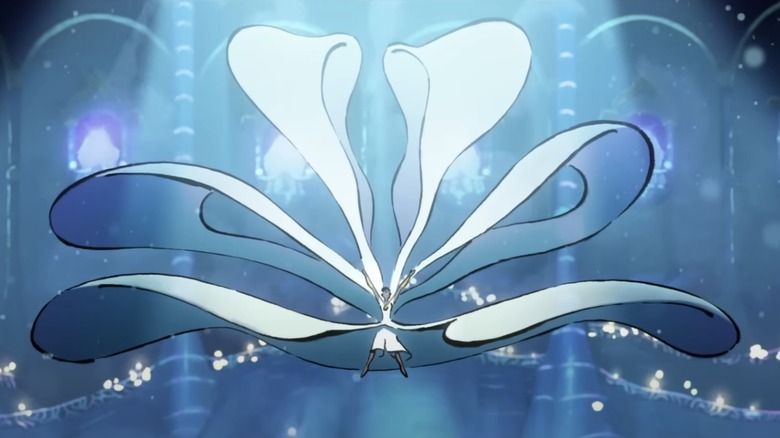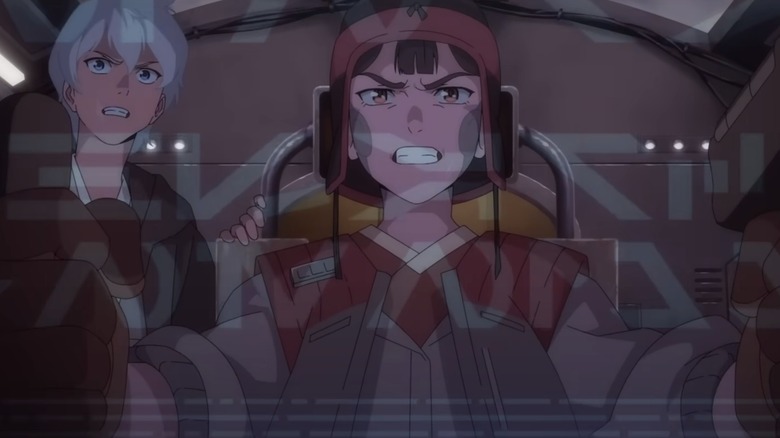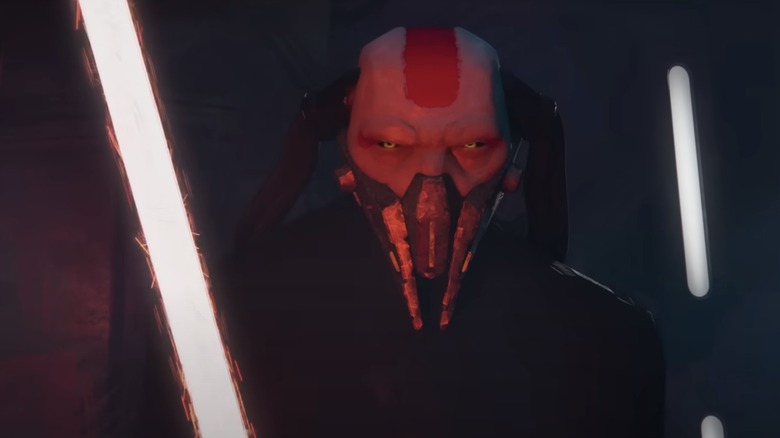How Star Wars: Visions Season 2 Reflects An Incredible True World War II Story
"Star Wars: Visions Volume 2" is an exciting window into the history and culture of places all across the globe. Filmmakers from Chile and India brought stories of the evils of colonialism. Filmmakers from the United States and Japan united to tell a story about racism. South Korean filmmakers told a story about the dangers of trying to change the future. Filmmakers from Spain made a film about how art can guide us to the light.
Every installment of this season was a tour de force of meaning and depth, but one stood above the others in its rooting in culture, history, and art. And one installment in particular is worth highlighting.
The Spy Dancer
Produced by Studio La Cachette from France, "The Spy Dancer" tells the tale of dancers in a cabaret on a planet now controlled by the Empire. The dancers cater to the whims of the Imperials, and it would look, from the outside, as though they were collaborators. Secretly, the dancers are working for the Rebellion, attaching trackers to all of the Imperials that come to their performances. It's a dangerous game, especially if someone were to notice what the dancers were doing. One doesn't get the impression the Empire takes prisoners. The short itself borrows from one of the most important movements in modern French history and leans into the history George Lucas was relying on to establish his universe and the Empire specifically: the fascist regimes of Nazi Germany.
The French Resistance
During World War II, the Nazis invaded France and occupied much of the country, including Paris. In order to combat the fascists that had taken over their beloved cities, the French created a resistance movement to fight them with any means they could. Because most of the Resistance had been with the military, armed resistance wasn't immediately feasible, so they relied on printing pamphlets, spying on Nazis, and trading information. They established a thriving black market to combat rationing and even established new fashion as a tool of resistance against the Nazis.
As far as entertainers like the ones we saw in "The Spy Dancer," one notable story of this sort of spying and resistance work came in the form of Josephine Baker. Baker was not only an iconic legend of the Jazz Age, but a hero of the French Resistance. She came to France from the United States and stayed there after denouncing the racism in America. There, she became a superstar dancer. This status enabled her to get close to prominent Axis officers and obtain information vital to the Allies. After the war, she was awarded the Croix de Guerre and the Rosette de la Résistance by Charles De Gaulle himself.
This isn't the only "Star Wars" story inspired by the Free French movement either. Look to the story of the Twi'lek people across "Star Wars: The Clone Wars," "Star Wars Rebels," and in books like "Lords of the Sith." It's no mistake that on their native world of Ryloth, Twi'leks speak with a French accent.
Other inspirations
If you look even closer at "The Spy Dancer," you'll see many nods to art and culture that are commonplace in France. Much of the art style takes cues from the Art Nouveau movement. Though not strictly French, it has ties deep in France where even many of the Metro stations are still fashioned in this style more than a hundred years later. Art Nouveau is also important because of the way it uses lines and implies movement and dynamism in its lines. "The Spy Dancer" evokes this in moving images.
It also takes place in a cabaret, which was the sort of venue that France has been particularly known for, from the Chat Noir and Agile Lapin to the Moulin Rouge itself. "The Spy Dancer" offers a musical dance performance akin to those one could see at that time. But cabarets weren't just for dancing. They were gathering places for artists and thinkers, and exactly the sort of folks dangerous enough to resist regimes like the Nazis or the Empire.
Seeing stories that rip moments and ideas from history in the "Star Wars" universe adds a layer of realism and importance to the stories, reminding us to pay attention to the horrors behind the art. And with "The Spy Dancer", the filmmakers gave us something uniquely French.
"Star Wars: Visions – Volume 2" is now streaming on Disney+.



